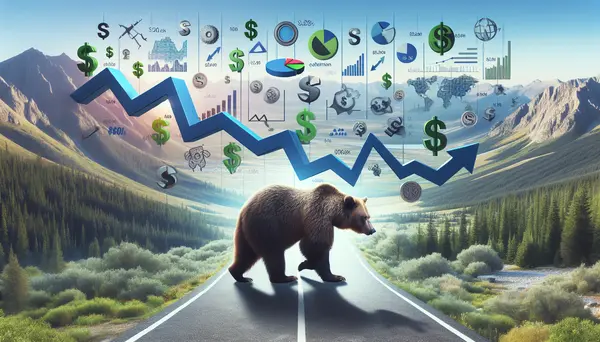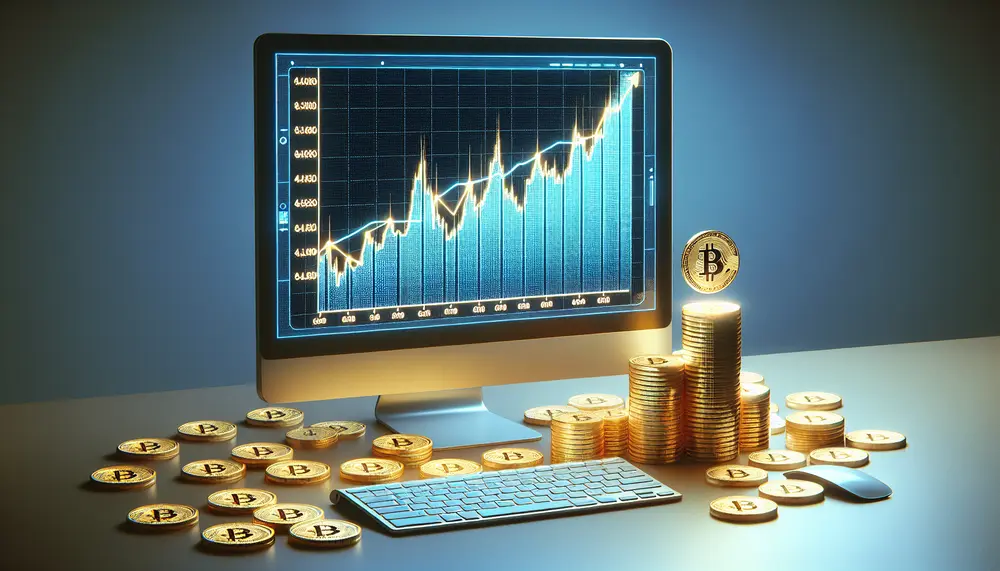Bear Market
Bear Market
Understanding Bear Market
At its core, a bear market is a term you'll frequently encounter in the world of trading. Intriguingly named after the downwards strike of a bear's paw, a bear market describes a scenario when the prices in a market – most commonly a stock exchange - endure a prolonged period of decline. They typically fall by 20% or more from recent highs amid widespread pessimism and negative investor sentiment.
Characteristics of a Bear Market
In a bear market, investors tend to have a negative outlook overall; this results in a self-sustaining, downward spiral. The pessimism may overstretch itself, leading to lower asset prices that some may perceive as over-selling. During such market conditions, there's an increased pressure to sell rather than buy, causing an even further drop in prices.
Effects of a Bear Market
A bear market usually arises when the economy is in a recession or experiencing dwindling gross domestic product (GDP). It often comes with a drop in share prices, layoffs in businesses, and a decline in available job opportunities as companies aim to save their assets. Understanding and navigating a bear market can be an essential skill for both new and seasoned traders.
Surviving a Bear Market
Despite its harsh nature, it's possible to weather a bear market, and even experience some degree of success. Some strategies include investing in safer, recession-proof sectors or looking for stocks that have been oversold and may, therefore, benefit from a price correction. Many also consider bear markets to be a good time to buy, as stocks are effectively 'on sale'.
Conclusion
In conclusion, the term 'Bear Market' is a significant part of trading vocabulary, and understanding it is key for all traders. While it represents a challenging time, it can also offer unique opportunities to those skilled enough to navigate its stormy waters.
Blog Posts with the term: Bear Market

This article discusses the strategies of day trading and HODLing in the world of cryptocurrencies. Day trading involves active trading within the same day to make short-term profits, while HODLing is a passive strategy of holding onto cryptocurrencies for the...

Bear market trading refers to the strategy of trading during a bear market, where prices are falling and pessimism is widespread. This article provides insights into the basics of bear market trading, including strategies such as diversification, buy-and-hold, defensive stock...

This article introduces the concept of candlestick patterns in trading and explains their origins. It discusses the pros and cons of using candlestick patterns to decode price movements and identifies some key patterns that traders can use to make more...

A crypto trading system is a structured approach to making trade decisions in the volatile cryptocurrency market, taking into account factors like market sentiment and regulatory news. It involves selecting suitable assets based on liquidity and risk tolerance, employing technical...

Cryptocurrency trading involves exchanging digital assets like Bitcoin and Ethereum to profit from market fluctuations, with the process being secured by cryptography and taking place in a decentralized global market. When choosing an exchange platform, factors such as security, user...

Cryptocurrency trading requires understanding the 24/7 market, blockchain technology, and factors influencing prices; choosing a secure platform is essential. Balancing risk tolerance with financial goals is key to strategy development, while technical analysis uses chart patterns and indicators for price...

This article introduces readers to the world of Contracts for Difference (CFDs), a form of trading that allows investors to speculate on the price movements of assets without actually owning them. It provides a basic understanding of CFD trading, including...

Cryptocurrency trading involves exchanging digital currencies or fiat money with the aim of profit, requiring knowledge of blockchain technology, market analysis, and liquidity. Despite 24/7 accessibility and potential high returns, it poses risks like extreme volatility, regulatory uncertainty, security issues,...

Bitcoin trading involves buying the cryptocurrency at a low price and selling it when the price is high, with various strategies such as buy and hold, day trading, swing trading, scalping or trend following. However, successful Bitcoin trading requires understanding...

Ethereum, symbolized as ETH, is a decentralized platform distinct from Bitcoin; it supports smart contracts and DApps on its blockchain which records all transactions. It's transitioning to proof-of-stake with Ethereum 2.0 to improve scalability and security, influencing its market dynamics...

Cryptocurrency trading involves buying and selling digital currencies like Bitcoin and Ether to profit from price fluctuations, using exchanges or CFDs. Traders must understand market dynamics, leverage risks in CFDs, the influence of Bitcoin on altcoins, and employ tools for...

The article explains that trading strategies are essential game plans for navigating the stock market, involving understanding objectives, managing risks, and adapting to changes. It explores various types of strategies like technical, fundamental, quantitative, day trading, and swing trading while...

